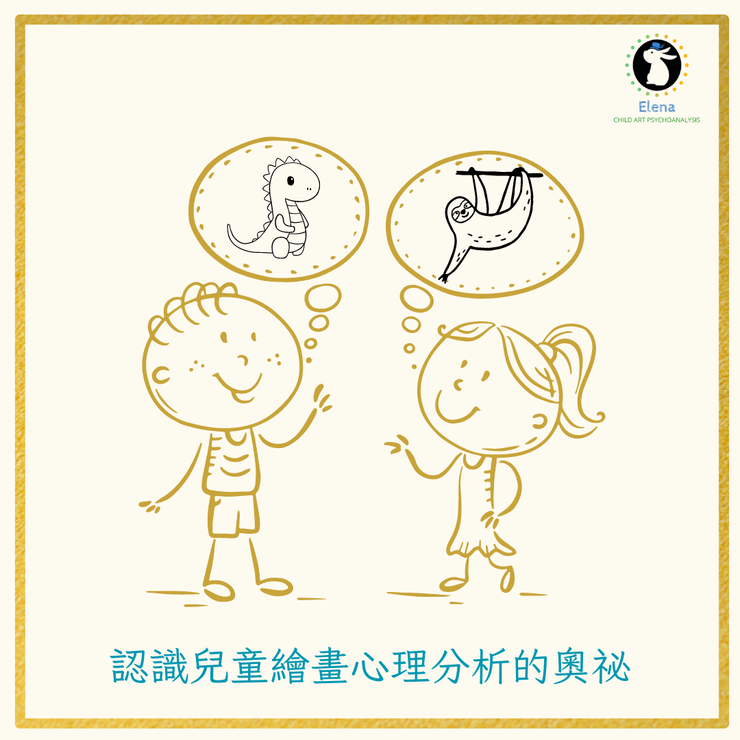#2認識兒童繪畫心理分析的奧祕
兒童繪畫不僅僅是一種創作和娛樂活動,它還能夠反映出兒童的內心世界、情緒狀態和潛在的心理問題。
透過深入分析兒童的繪畫作品,我們可以獲得寶貴的洞見,了解他們的想法、渴望和焦慮,這有助於父母和教育工作者更好地支持和引導孩子的成長。
佛洛伊德作為這一領域的先驅,為兒童繪畫心理分析奠定了基礎。
他認為,繪畫是兒童潛意識的一種外在表達,其中蘊含著許多隱藏的象徵意義。佛洛伊德將繪畫視為一種"自由聯想"的方式,通過解讀繪畫中的符號和意象,可以窺探兒童潛在的欲望和衝突。
現代心理學家在佛洛伊德理論的基礎上,進一步發展了兒童繪畫心理分析的方法和技巧。他們注意到繪畫中的細節、主題、顏色運用等多個層面,結合兒童的年齡、家庭背景和發展階段,對作品進行全面而深入的解讀。
舉例來說,如果一個孩子的畫作中經常出現暴力場景或黑暗色調,可能暗示著他內心的焦慮或創傷體驗。如果人物畫得很小,可能反映了孩子的自卑或無助感。如果畫面缺乏細節或結構性,則可能意味著注意力不集中或思維混亂。
當然,兒童繪畫心理分析它需要結合專業知識和敏銳的觀察力。
分析師不僅要詳細研究作品本身,還要與孩子進行深入交流,了解他們的想法和感受,從而作出更準確的評估。
總的來說,認識兒童繪畫心理分析的奧祕,有助於我們更好地理解孩子們的內心世界,及時發現潛在的心理問題,並為他們提供必要的關注和幫助,促進他們健康成長。
這個領域蘊含著豐富的啟示,值得我們進一步探索和思考。
#兒童繪畫心理分析#兒童內心世界#兒童心理健康#佛洛伊德理論#繪畫作品分析#兒童心理衝突#繪畫符號意象#兒童心理需求#兒童創傷體驗#兒童心理成長
如果想瞭解更多,歡迎持續的追蹤我,我們將會慢慢的一同打開潘多拉的盒子
Unveiling the Secrets of Psychological Analysis of Children's Drawings
Children's drawings are not merely a creative and recreational activity; they can also reflect their inner world, emotional states, and potential psychological issues. By deeply analyzing children's artworks, we can gain valuable insights into their thoughts, desires, and anxieties, which helps parents and educators better support and guide their growth.
Freud, as a pioneer in this field, laid the foundation for psychological analysis of children's drawings. He believed that drawing is an external expression of a child's unconscious mind, containing many hidden symbolic meanings. Freud viewed drawing as a form of "free association," through which one can explore a child's underlying desires and conflicts by interpreting the symbols and imagery in their artwork.
Building on Freud's theories, modern psychologists have further developed methods and techniques for analyzing children's drawings psychologically. They pay attention to various aspects such as details, themes, and use of color in the artworks, combining the child's age, family background, and developmental stage to conduct a comprehensive and in-depth interpretation.
For instance, if a child's drawings frequently depict violent scenes or dark hues, it may suggest inner anxiety or traumatic experiences. If figures are drawn very small, it could reflect the child's low self-esteem or feelings of helplessness. If the composition lacks detail or structure, it may indicate inattentiveness or disorganized thinking.
Of course, the psychological analysis of children's drawings requires a combination of professional knowledge and keen observation skills. The analyst not only needs to carefully study the work itself, but also engage in in-depth communication with the child to understand their thoughts and feelings, in order to make a more accurate assessment.
In summary, understanding the intricacies of psychological analysis of children's drawings helps us better comprehend their inner worlds, identify potential psychological issues in a timely manner, and provide necessary attention and assistance to promote their healthy growth. This field holds rich insights and is worthy of further exploration and contemplation.
#ChildDrawingPsychologicalAnalysis #ChildrenInnerWorld #ChildMentalHealth #FreudianTheory #DrawingAnalysis #ChildPsychologicalConflicts #DrawingSymbolsImagery #ChildPsychologicalNeeds #ChildhoodTraumaticExperiences #ChildPsychologicalDevelopment
If you want to learn more, welcome to continue following me. We will slowly open Pandora's box together.
